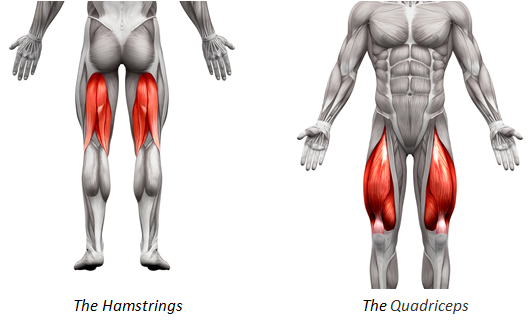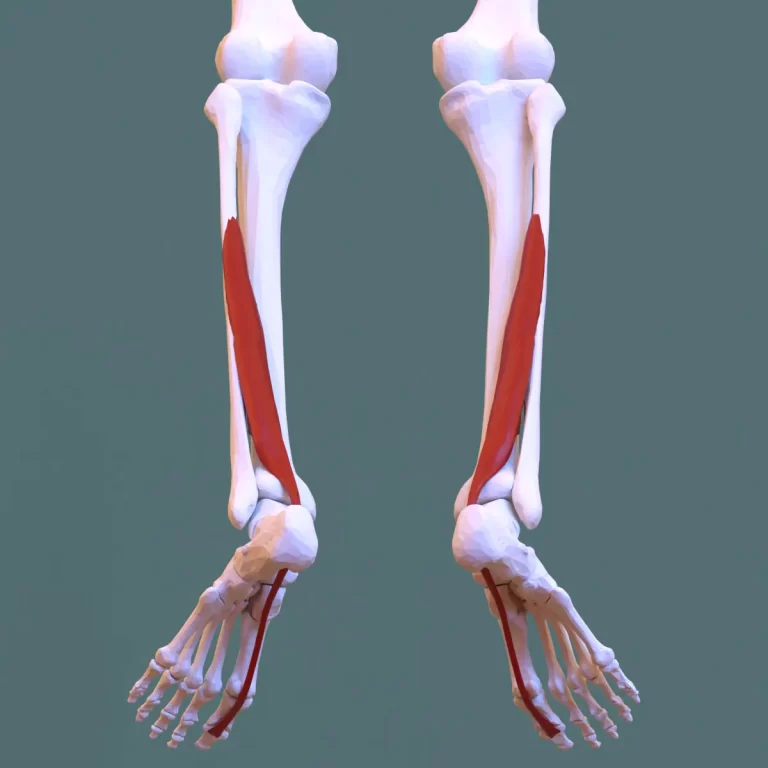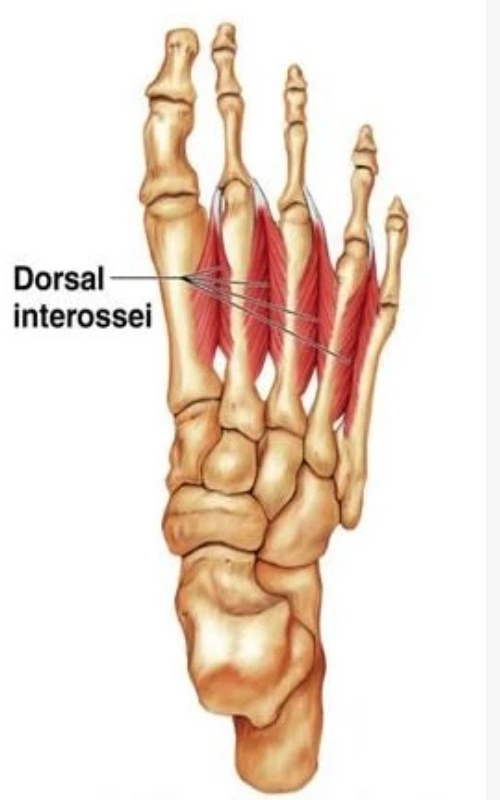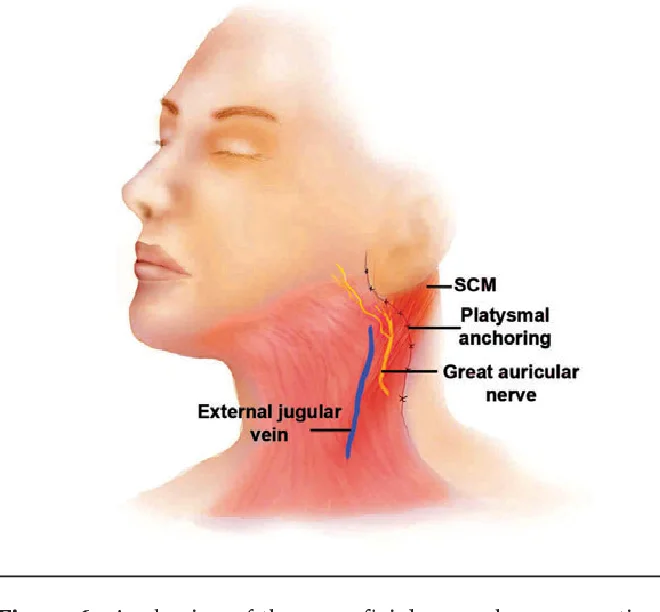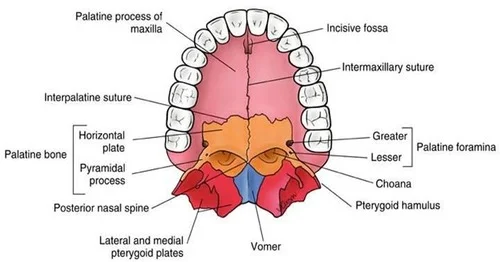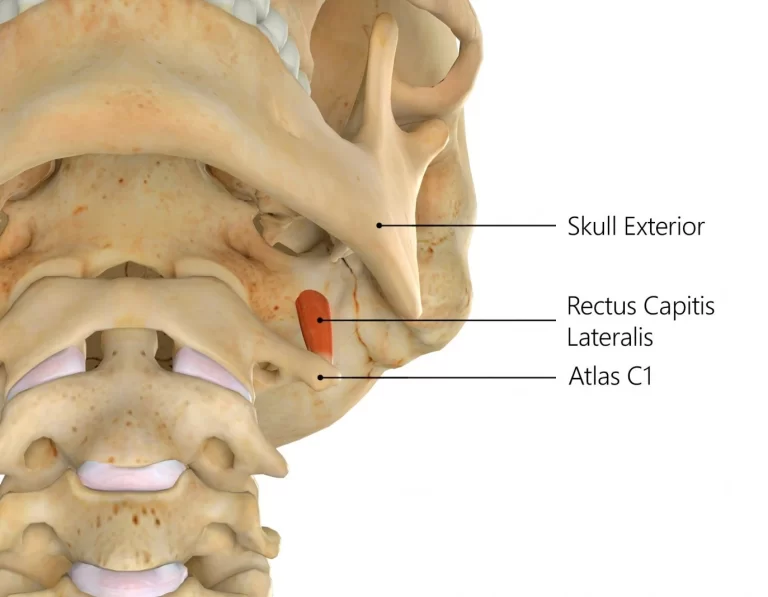Quadriceps vs Hamstrings
Introduction
The quadriceps and hamstrings are two of the most important muscle groups in the human body, playing key roles in movement and athletic performance. Located in the upper leg region, the quadriceps consist of four muscles on the front of the thigh while the hamstrings are made up of three muscles on the back of the thigh.
Developing strong quads and hams is critical for activities requiring power, speed, and agility. From walking and running to jumping and changing direction, these muscle groups generate much of the force necessary to perform lower-body movements. They also play an important role in stabilizing the knee joint and preventing common injuries.
However, there are some common misconceptions about training the quads and hamstrings. Some believe that quad-dominant training leads to muscle imbalances and a higher injury risk, while others think you should avoid hamstring training if you have previous hamstring strains.
This article will provide a comprehensive guide to understanding the quadriceps and hamstrings. It will cover the anatomy and function of these muscle groups as well as effective training techniques to strengthen both the quads and hams. Additionally, it will address some common myths around quad and hamstring training so you can develop a balanced, evidence-based lower-body training program.
Understanding the Quadriceps Muscles
Anatomy of the Quadriceps Muscles
The quadriceps consists of four muscles located on the front of the thigh:
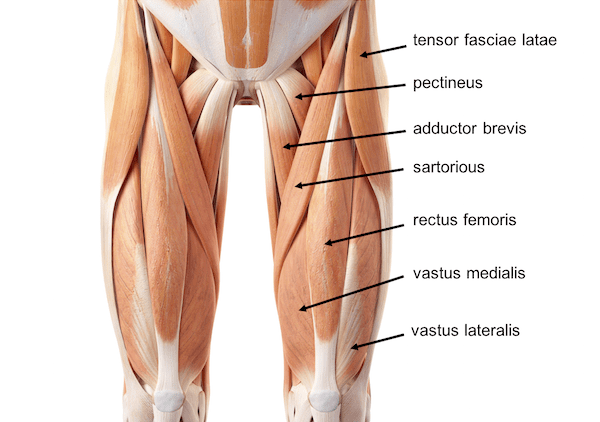
- Rectus Femoris: Runs down the middle of the thigh. It is the only quad muscle that crosses the hip joint, allowing it to contribute to hip flexion.
- Vastus Lateralis: Situated on the outer thigh. It is the largest and most powerful part of the quadriceps.
- Vastus Medialis: Located on the inner thigh. It helps stabilize the knee joint.
- Vastus Intermedius: Lies between the vastus lateralis and vastus medialis, deep under the rectus femoris. Provides power in knee extension.
Role of the Quadriceps in Joint Stability and Movement
The quadriceps perform several important functions:
- Extensor Function: Their main action is to extend the knee joint and straighten the leg. This generates power in activities like jumping, running, and kicking.
- Assistance in Knee Extension and Flexion: Although the hamstrings perform knee flexion, the quadriceps help control the motion when bending and straightening the knee.
- Contribution to Overall Lower Body Strength: Strong quads also allow greater strength development in other lower body muscle groups like the glutes and calves. This is critical for athletic performance and injury resilience.
Exploring the Hamstring Muscles
Anatomy of the Hamstring Muscles
Three muscles on the back of the thigh make up the hamstrings:
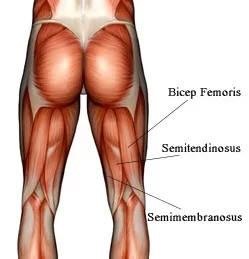
- Biceps Femoris: Situated on the outer thigh, this muscle has two separate origins, giving it great power.
- Semitendinosus: Located on the inner thigh. Helps medially rotate the lower leg.
- Semimembranosus: Also located on the inner hamstring, underneath the semitendinosus. Works with the semitendinosus to medially rotate the hip.
Function of the Hamstrings in Lower Body Mechanics
The hamstrings play several key roles:
- Flexor Role: Their main function is to flex the knee joint, bending it to bring the heel towards the glutes.
- Assistance in Hip Extension and Knee Flexion: In addition to their flexor role, they assist other muscles in extending the hips and controlling knee flexion.
- Implications for Running, Jumping, and Athletic Performance: Strong hamstrings are vital in sprinting, changing direction, jumping, and landing. They eccentrically control knee extension to produce power and absorb impact force. Weak hamstrings are linked to higher injury rates.
Comparison of the Quadriceps vs. Hamstrings:
| Muscle Group | Quadriceps | Hamstrings |
| Muscles | Rectus femoris, vastus lateralis, vastus medialis, vastus intermedius | Biceps femoris, semitendinosus, semimembranosus |
| Location | Front of thigh | Back of thigh |
| Main Function | Knee extension | Knee flexion |
| Secondary Functions | Hip flexion (rectus femoris only), leg control, stabilization | Hip extension, lower leg rotation |
| Fiber Type | Mostly fast-twitch | Higher ratio slow-twitch |
| Best Rep Range | 3-8 reps (heavy load) | 8-15+ reps (moderate load) |
| Main Exercises | Romanian deadlift, leg curls, glute ham raise | Romanian deadlift, leg curls, glute-ham. raise |
| Priority | Strength, power, speed | Endurance, stamina |
| Benefits | Athletic performance, injury resilience | Injury protection, postural balance |
| Romanian deadlift, leg curls, glute ham raise | High | Very high |
The key differences lie in the muscle makeup, mechanics, and training needs between the quadriceps and hamstrings. This table provides a quick snapshot comparison of location, roles, fiber types, ideal training rep ranges, priority exercises, movement focuses, and flexibility requirements.
Quad and Hamstring Training Strategies
Benefits of a Balanced Quad and Hamstring Training Program
To maximize the benefits of training, it is crucial to develop a balanced program that targets both the quadriceps and hamstrings. A well-rounded approach provides numerous advantages, including injury prevention, enhanced athletic performance, and improved muscle symmetry and aesthetics.
When training the quadriceps, exercises such as squats, leg presses, and lunges are highly effective. These compound movements engage multiple muscles and promote overall lower body strength. By incorporating variations and adjusting the load and intensity, you can continuously challenge your muscles and achieve progressive overload.
On the other hand, targeted hamstring exercises are equally important. Deadlifts, hamstring curls, and glute-ham raises specifically target the hamstrings, helping to build strength and improve performance in activities requiring hip extension and knee flexion. As with quad exercises, modifying variables such as load, rep range, and exercise choice ensures continuous progress.
Developing strong and balanced quads and hams provides several advantages:
- Injury Prevention: Balanced strength between the quadriceps and hamstrings reduces injury risk. Common knee injuries like ACL tears often result from muscle imbalances.
- Enhanced Athletic Performance: Properly training both muscle groups improves acceleration, jumping, cutting, and agility by enhancing power generation and absorption.
- Improved Muscle Symmetry and Aesthetics: Targeting all areas of the quads and hams provides fuller, symmetrical muscular development for aesthetic goals.
Targeted Exercises for the Quadriceps
The quads can be trained with:
- Squats and Variations: Back squats, front squats, and squat variations train the quads through a large range of motion while engaging the glutes and hamstrings too.
- Leg Press: This machine exercise isolates the quads through knee extension while limiting strain on the lower back.
- Lunges and Step-Ups: These functional exercises train the quads unilaterally, promoting stability and preventing muscle imbalances side-to-side.
Targeted Exercises for the Hamstrings
The hamstrings respond well to:
- Deadlifts: This compound exercise targets multiple muscles, including the hamstrings. Performing deadlifts with proper form engages the biceps femoris and the other two hamstring muscles.
- Deadlifts and Variations: Conventional and Romanian deadlifts effectively target the hamstrings in hip extension. Stiff-leg and single-leg variations are also highly effective.
- Hamstring Curls: Seated and lying curls focus on hamstring flexion isolated at the knee joint, limiting the involvement of the glutes and lower back muscles.
- Glute-Ham Raise: This challenging bodyweight movement hones hamstring and glute strength in hip extension. It requires no equipment and trains the core too.
Tips for Maximizing Quadriceps and Hamstrings Strength
- Warm-Up: Before performing any quadriceps or hamstring exercises, it’s crucial to properly warm up your leg muscles. Incorporate dynamic stretches and movements such as leg swings, high knees, and walking lunges.
- Progressive Overload: To continue challenging your quadriceps and hamstrings, gradually increase the weights or resistance you use during exercises. This progressive overload stimulates muscle growth and enhances strength.
- Balanced Training: Ensure you maintain a balanced training routine that targets both the quadriceps and hamstrings. Neglecting one muscle group can lead to muscle imbalances and an increased risk of injury.
- Recovery and Rest: Allow your muscles to recover and grow stronger by incorporating rest days into your training program. Adequate sleep, proper nutrition, and hydration are also essential for optimal muscle recovery.
Finding Balance: Quadriceps and Hamstrings Working Together
It’s not a battle between quadriceps and hamstrings, but rather a harmonious symphony that allows for optimal lower body strength and movement. Proper balance between these muscles is crucial for maintaining functional movement patterns, preventing muscle imbalances, and reducing the risk of injury.
Importance of Muscle Balance
- Muscle Imbalance Hazards: Imbalances between the quadriceps and hamstrings can lead to poor biomechanics, increasing the risk of injuries such as sprains or strains.
- Joint Stress Redistribution: Balanced strength between the quadriceps and hamstrings helps distribute forces evenly across the knee and hip joints, minimizing joint stress and potential wear and tear.
- Optimal Movement Efficiency: Harmonized functioning between these muscle groups allows for efficient energy transfer and improved athletic performance in various activities.
Strategies for Balance Enhancement
- Compound Exercises: Engage in compound exercises like squats, lunges, and deadlifts that utilize both the quadriceps and hamstrings simultaneously, promoting balanced muscle development.
- Resistance Training: To ensure balanced strength gains, incorporate resistance training exercises that target the quadriceps and hamstrings individually, such as leg extensions and hamstring curls.
- Flexibility Training: Stretching exercises like forward bends and seated hamstring stretches help maintain flexibility and prevent muscle tightness in both the quadriceps and hamstrings.
- Core and Hip Stability: Focus on core and hip stability exercises, such as planks and bridges, to provide a solid foundation for quadriceps and hamstring strength during dynamic movements.
- Rest and Recovery: Ensure adequate rest and recovery between workouts to allow for muscle healing and growth, reducing the risk of overuse injuries.
Factors to Consider in Quadriceps vs Hamstring Training
Understanding Different Muscle Fiber Types
The quadriceps and hamstrings contain different proportions of muscle fiber types:
- Slow-Twitch Fibers in the Hamstrings: The hamstrings have a higher ratio of slow-twitch fibers. This impacts training needs, as slow-twitch fibers respond better to higher reps with moderate loads.
- Fast-Twitch Fibers in the Quadriceps: A majority of quadriceps muscle fibers are fast-twitch, tuned for power and strength. This favors lower reps per set with heavier loading patterns.
Training Volume and Load Distribution
When programming quad and hamstring workouts, consider:
- Optimal Training Frequency and Volume Ratios: Hit each muscle group 1-2 times per week, with a higher total weekly volume for the quads than hamstrings. A 2:1 weekly set ratio (quad: hamstring) is a good baseline.
- Balancing Quadriceps vs Hamstring Load in Different Training Phases: Allow phases focusing more on quadriceps or hamstring strength based on sports needs and fatigue management. Adjust volume accordingly within optimal ratios.
Flexibility and Mobility Considerations
It’s vital to program stretching and soft tissue work:
- Importance of Stretching and Mobility Exercises: Ensure 4-5 focused hamstring stretches after workouts. Foam roll and use massage tools regularly on quadriceps and hip flexors too.
- Address Muscle Imbalances and Tightness: Analyze posture and mechanics during training. Target tighter muscle groups and muscles prone to domination. Keep quads and hams balanced.
Summary
The quadriceps and hamstrings are critical muscle groups of the upper leg that play integral roles in movement, athletic performance, and injury resilience. Located on the front and rear of the thighs respectively, these muscle complexes work synergistically to facilitate lower body power and stability during activities like running, cutting, jumping, and more.
Structurally, the quadriceps consist of four muscles – the rectus femoris, vastus lateralis, vastus medialis, and vastus intermedius. They act as knee extensors and also contribute to overall leg strength. Comparatively, the hamstring group consists of three muscles – the biceps femoris, semitendinosus, and semimembranosus – that function as knee flexors while assisting in hip extension.
When properly strengthened, the quads and hams provide enhanced athletic potential and protection against common injuries in sports and training. However, multiple factors like muscle fiber type ratios and flexibility needs differ between these groups and require individualized programming approaches.
The quadriceps benefit from heavy loads and lower rep ranges given a predominance of fast-twitch fibers. Squats, leg presses, and lunges effectively train the quads alongside the hamstrings and glutes. Conversely, the hamstrings’ higher composition of slow-twitch fibers responds better to moderate loads and increased volume. Targeted hamstring training utilizes deadlifts, curls, and accessory work like the glute ham raise.
Ensuring a balance between stretches, appropriate volume distribution per muscle group, and regularly assessing flexibility and posture facilitates balanced quad and hamstring function for maximal performance. Consistently tracking progress facilitates muscular symmetry and averts injury.
Frequently Asked Questions (FAQs)
Are the Quadriceps and Hamstrings equally important for lower body strength?
Yes, the quads and hams are equally vital for comprehensive leg strength, making knee stability and injury resilience. Neglecting either muscle group leads to weakness, pain, and reduced function.
Can I train my Quadriceps and Hamstrings on the same day?
Combining quad and ham exercises in one session saves time and directly focuses on lower body strength. Just prioritize compound exercises first.
How can I prevent muscle imbalances between my Quadriceps and Hamstrings?
Performing quad and hamstring stretches, analyzing mechanics in compound lifts, including unilateral exercises, and tracking volume ratios between muscle groups to prevent imbalances.
What is the recommended frequency of training for Quadriceps and Hamstrings?
Aim to train quads and hams 1-2 times per week each depending on your level, with 2 full lower body sessions per week being optimal for most.
Should I use machines or free weights for Quad and Hamstring exercises?
Free weights allow greater muscle activation through stabilization demands, so base programs around barbells/dumbbells. Occasionally utilize machines for more isolation or when recovering from injury if needed.
References
Munye, A. (2023, April 28). Quads vs Hamstrings: A Comprehensive Comparison. AMMFitness. https://www.ammfitness.co.uk/information-advice/quads-vs-hamstrings
Johnson, A. (2024, January 13). Hamstring Vs Quad Exercises: A Guide To Balancing Leg Workouts – Workout Guru. WorkoutGuru. https://workoutguru.fit/workouts/hamstring-vs-quad-exercises/
Halse, H. (2011, August 3). How to Balance Your Hamstrings and Quadriceps. LIVESTRONG.COM. https://www.livestrong.com/article/508461-how-to-balance-your-hamstring-and-quadriceps/
Knowing the Difference Between Hamstrings and Quads Can Prevent Injury. (2019, October 15). SportsRec. https://www.sportsrec.com/7659270/knowing-the-difference-between-hamstrings-and-quads-can-prevent-injury

